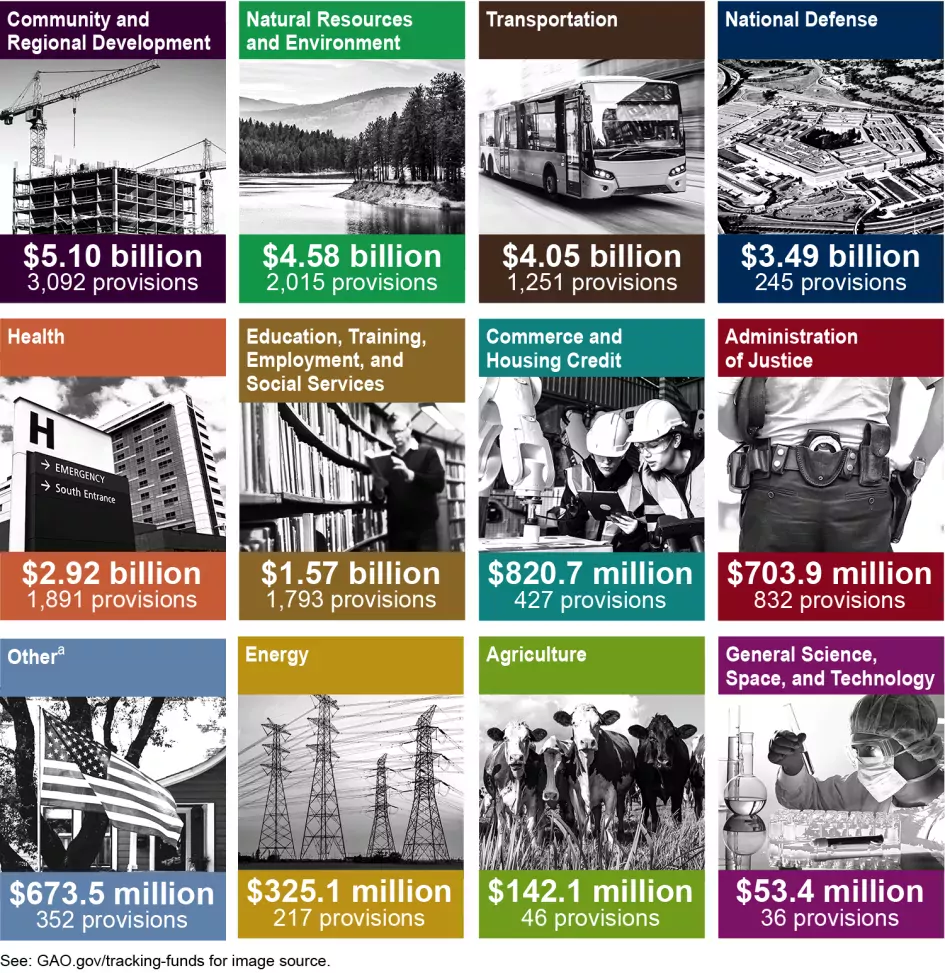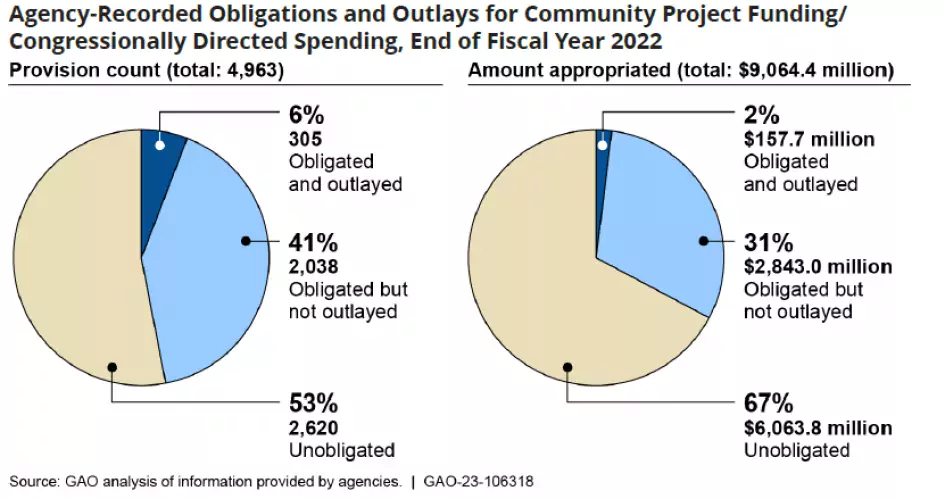Tracking the Funds—Community Project Funding and Congressionally Directed Spending
Starting with the fiscal year 2022 appropriations, Members of Congress began a new process for Members to request funds for specific projects and established requirements to help ensure transparency and accountability. While directed funds were previously referred to as “earmarks,” under this new more transparent process this funding is referred to as “Congressionally Directed Spending” in the Senate and “Community Project Funding” in the House.
Under the new system, Members must provide information, such as the purpose and recipient of the funding to ensure no conflicts of interest. Another requirement is that GAO get involved in tracking the funds.
To help provide initial oversight to the process, last year we issued reports to show where the fiscal year 2022 funding went. Today’s WatchBlog post looks at what we found when we tracked those funds and the new funding appropriated in fiscal year 2023. And check out our interactive graphic linked below to see where the funding went.
Where did the funds go and for what purpose?
In fiscal year (FY) 2023, Congress designated $15.3 billion for about 7,200 local or community projects through this new process. This was in addition to designated funds totaling $9.1 billion for almost 5,000 projects in FY 2022.
Other than the addition of one new agency in FY 2023—the Office of National Drug Control Policy—the same 18 agencies received funding for these provisions in both years. You can see funding for each agency by visiting our Tracking the Funds page. In both FY 2022 and FY 2023, Congress designated the projects for a variety of purposes. The top five broad purpose categories, known as budget functions, over both years of projects were:
- Community and Regional Development. Projects such as the construction, restoration, or improvement of public libraries and performing arts centers, and expansion of domestic violence shelters.
- Natural Resources and Environment. Projects including efforts to conserve aquatic habitats, manage watersheds, and improve sewer systems.
- Transportation. Projects including efforts to extend airport runways, expand and improve bus rapid transit lines, and install traffic lights.
- National Defense. Projects including the planning and design of a munitions maintenance and inspection facility, constructing a child development center at an Air Force base, and researching and developing next generation explosives.
- Health. Projects including efforts to cover equipment and operational costs for an oral health program, provide children’s mental health services, and upgrade Tribal water distribution systems.
Budget Functions of Funding Provisions in the Consolidated Appropriations Act, 2022 and 2023
Image

What did we find about the implementation of the fiscal year 2022 funds?
We are currently looking at how the projects are progressing across a sample of FY 2022 projects and plan to report on that work later in 2024. While it will take a few years before we have a full picture of how agencies spent the FY 2022 designated funding, we can make a start by looking at what federal agencies have reported so far.
In our new report, we looked at the status of funding approved by Congress in FY 2022. We found that federal agencies had made commitments to spend the funds—such as by signing contracts or awarding grants—for about half of the projects (or one-third of the funding). But the agencies had only distributed funding for about 6% of the projects (or about 2% of the funds).
This is about what we had expected to see given that many agencies had multiple years to commit and spend their funds. Congress gives agencies a time frame to make these commitments before the funds expire—frequently one year—but sometimes it is multiple years, or the funds don’t even have an expiration date. Agencies typically have an additional five years after funds expire to finish distributing the funding.
The below pie charts show federal agencies’ progress spending their designated funds. On the left is what percentage of projects have committed funds so far, and on the right is what percentage of the total funding has been committed to those projects (a handy primer on obligations and outlays is available here).
Image

For those FY 2022 funds with one year of availability, agencies legally committed 99.2% of the funds before they expired at the end of that fiscal year. Agency officials told us that for the remaining 1% of the funds (13 provisions) they were unable to start the project because the recipient organizations closed, or the recipients withdrew their applications or declined funding. For example, the Department of Education officials told us that the recipient organization for one of its projects no longer exists.
We will continue to track this funding over the coming years. Check out our Tracking the Funds page to learn more about our work in this area.
- GAO’s fact-based, nonpartisan information helps Congress and federal agencies improve government. The WatchBlog lets us contextualize GAO’s work a little more for the public. Check out more of our posts at GAO.gov/blog.



